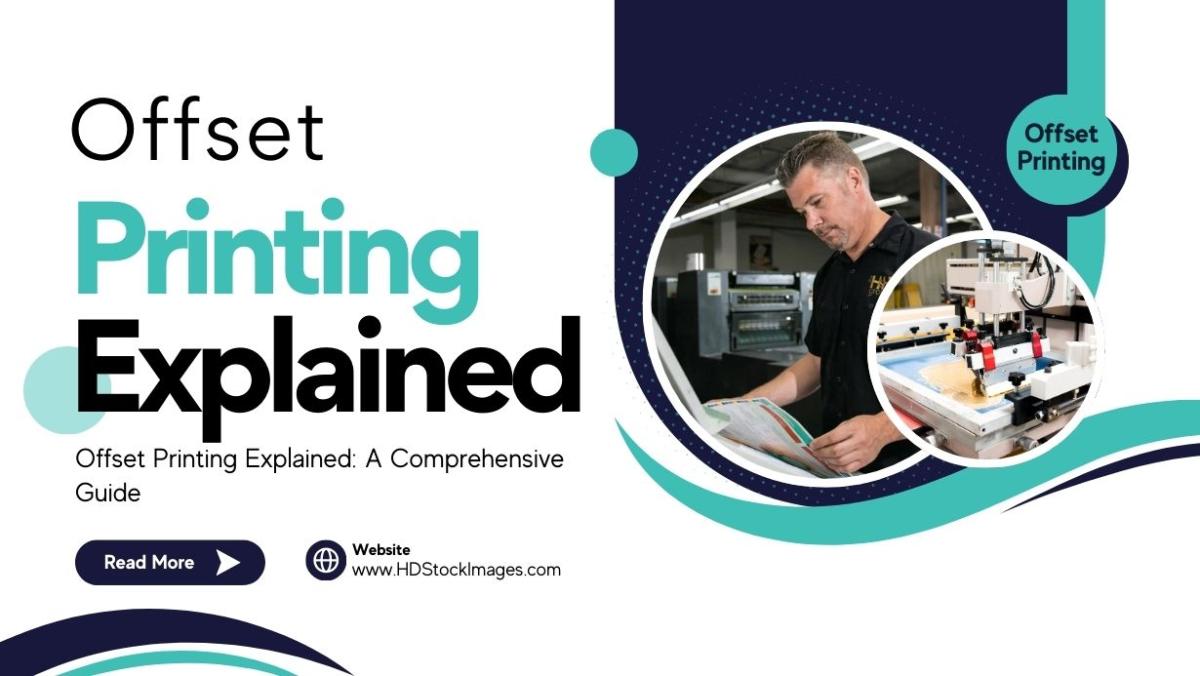Offset printing has been a cornerstone of the printing industry for over a century, offering unparalleled quality and efficiency for high-volume print jobs. Whether you're a business owner looking to produce marketing materials or an individual interested in the printing process, understanding offset printing can help you make informed decisions. In this comprehensive guide, we'll explore what offset printing is, how it works, its advantages, and its applications.
Introduction to Offset Printing
What is Offset Printing?
Offset printing is a widely used printing technique where the inked image is transferred (or "offset") from a plate to a rubber blanket and then onto the printing surface, usually paper. This method is called "offset" because the ink is not transferred directly onto the paper.
Offset printing is known for producing high-quality images and text, making it the go-to choice for large-scale print runs.
Brief History
The origins of offset printing date back to the late 18th century, but it wasn't until the early 20th century that it became commercially viable. The technique revolutionized the printing industry by allowing for faster production times and higher-quality prints compared to traditional methods like letterpress printing.
Importance in the Printing Industry
Offset printing remains a dominant force in the printing industry, especially for large-volume projects. Its ability to deliver consistent, high-quality results at a relatively low cost per unit makes it indispensable for businesses and publishers alike.
How Offset Printing Works
The Offset Printing Process
The offset printing process involves several key steps:
- Prepress Preparation: The design is finalized and separated into its primary colors (usually CMYK: cyan, magenta, yellow, and black).
- Plate Making: Metal plates are created for each color, containing the image or text to be printed.
- Ink Application: Ink is applied to the plates, which only adhere to the image areas.
- Offsetting to Blanket: The inked image is transferred from the plate to a rubber blanket.
- Printing on Substrate: The rubber blanket presses against the paper, transferring the inked image.
Components Involved
- Printing Plates: Typically made of aluminum, these plates hold the image to be printed.
- Ink Rollers: Apply ink to the plates.
- Rubber Blanket: Transfers the image from the plate to the paper.
- Impression Cylinder: Presses the paper against the rubber blanket.
Advantages of Offset Printing
High Image Quality
Offset printing produces sharp and clean images with rich color depth. The rubber blanket conforms to the texture of the printing surface, ensuring consistent ink distribution.
Cost-Effectiveness for Large Runs
While the initial setup costs are higher due to plate creation, the cost per unit decreases significantly as the print run increases. This makes offset printing highly economical for large quantities.
Versatility in Materials and Finishes
Offset printing is compatible with a wide range of paper types and weights, as well as other materials like cardboard and plastic. Various finishes such as gloss, matte, and spot UV can also be applied.
Offset Printing vs. Digital Printing
Comparison
| Aspect | Offset Printing | Digital Printing |
|---|
| Setup Costs | Higher (plates required) | Lower (no plates) |
| Cost per Unit | Decreases with volume | Relatively constant |
| Print Quality | High | Good, improving over time |
| Turnaround Time | Longer | Faster for short runs |
When to Choose Offset Over Digital
Offset printing is the better choice when:
- You require a large quantity of prints.
- Color accuracy and consistency are crucial.
- You need specific paper types or finishes not available in digital printing.
Applications of Offset Printing
Books, Magazines, and Newspapers
Offset printing is ideal for publishing due to its ability to handle large volumes while maintaining high quality. It's commonly used for:
- Books: Both hardcover and paperback editions.
- Magazines: High-resolution images and vibrant colors.
- Newspapers: Fast printing speeds for daily circulation.
Packaging
From product boxes to labels, offset printing provides the flexibility and quality needed for attractive packaging solutions.
Marketing Materials
Businesses often use offset printing for materials like brochures, flyers, and posters, benefiting from the high-quality output and cost-effectiveness for bulk orders.
Conclusion
Offset printing continues to be a vital technology in the printing industry, offering unmatched quality and efficiency for large-scale projects. Understanding its advantages and applications can help you choose the best printing method for your needs.If you're planning a large print run or require high-quality prints with specific finishes, offset printing might be the perfect solution. Consider reaching out to a professional printing service to explore how offset printing can meet your project's requirements.

 admin
admin








